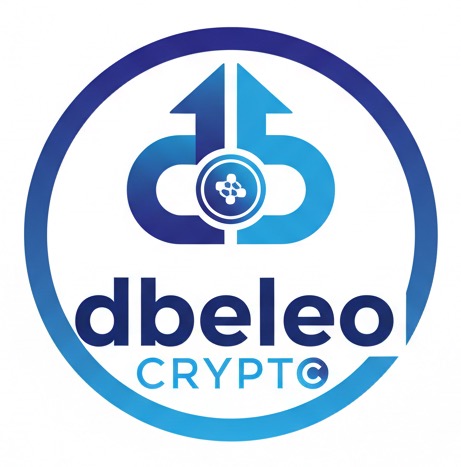Zcash (ZEC) Protocol: Deep-Dive on zk-SNARK Cryptography, Regulatory Risk, and Institutional Viability
II. Strategic Risk Matrix
2.1 Strategic Overview: Zcash’s Value Proposition and Core Thesis
Zcash (ZEC) is fundamentally a dual-model cryptographic asset, leveraging the security and censorship resistance of a Bitcoin-derived ledger while incorporating mathematically guaranteed privacy via advanced zero-knowledge cryptography. Its unique market position rests at the intersection of absolute data confidentiality and regulatory compliance. The core thesis posits that privacy should be an option, not a mandate, allowing users to shield transaction details (sender, recipient, and amount) using Zero-Knowledge Succinct Non-Interactive Arguments of Knowledge (zk-SNARKs).1 The critical success factors determining Zcash’s trajectory and viability for institutional capital hinge on two primary technological pillars: the successful transition to the trustless Halo 2 cryptographic architecture to eliminate foundational security risks, and the practical utility of compliance mechanisms, specifically Viewing Keys, for mandatory regulatory reporting and auditing purposes.2
2.2 Key Findings and Comprehensive Risk Matrix
The analysis reveals Zcash has proactively addressed several major systemic risks, while new practical challenges related to adoption and forensic vulnerability have emerged.
- Cryptographic De-risking: The Network Upgrade 5 (NU5) deployed in May 2022, which introduced the Orchard shielded payment protocol and the Halo 2 proving system, fundamentally mitigates the primary theoretical attack vector of previous iterations.1 This upgrade successfully removes the necessity of a “trusted setup” (associated with the toxic waste of legacy Groth16/Sapling protocols).4 This architectural pivot enhances the protocol’s long-term integrity and eliminates a point of central trust previously scrutinized by researchers.
- Regulatory Mitigation: Zcash’s design is intrinsically geared toward compliance flexibility. The optional nature of privacy, coupled with the ability for users to share transaction history through “Selective Disclosure” via Viewing Keys, has proven effective in high-stakes jurisdictions.2 This explicit design choice secured regulatory approval in the United States, notably from the New York Department of Financial Services (NYDFS), leading to Zcash’s listing and custody offering on regulated US exchanges like Gemini.6
- Forensic Vulnerability: Despite the robust cryptographic guarantees for fully shielded (z-to-z) transfers, real-world usage patterns introduce significant linkability. Adoption of shielded transactions remains relatively low (historically ~5.57%, though recently trending higher toward ~20% of circulating supply).8 Forensic analysis firms claim high traceability (over 99% of activity).10 This vulnerability is exploited primarily by observing predictable user behavior and transactions that bridge the public and private spheres (T-to-Z-to-T), allowing for heuristic linking of counterparties and values.12
- Investment Catalyst: Zcash operates under a fixed supply of 21 million ZEC and follows a Bitcoin-style halving mechanism. The impending third halving, scheduled for November 2024, acts as a significant supply shock catalyst.13 This monetary event coincides with a reported surge in institutional interest and a major technical breakout in trading volume, suggesting sophisticated capital accumulation in anticipation of reduced issuance.15
Zcash Strategic Risk Matrix for Institutional Stakeholders
| Risk Category | Primary Finding/Assessment | Mitigating Factor | Residual Risk Level |
| Cryptographic Trust | Legacy reliance on “toxic waste” (Groth16/Sapling).4 | Migration to Halo 2 (NU5/Orchard) eliminates trusted setup requirement.3 | Low (Post-NU5) |
| AML/KYC Compliance | Optional privacy model (T-addr existence compromises fungibility).16 | Viewing Keys permit Selective Disclosure to regulators/auditors.2 | Medium-Low (US Specific) |
| Forensic Traceability | Low Z-pool adoption and T-to-Z-to-T linkage heuristics.10 | Z-to-Z transactions are mathematically obfuscated and provide strong fungibility.18 | High (Non-shielded/Bridging Transactions) |
| Regulatory Stability | Global de-listings (Japan, potential EU MiCA).19 | Explicit US regulatory approval (NYDFS/Gemini) provides strong precedent.7 | Medium (Jurisdictional Split) |
III. Cryptographic Architecture and Protocol Security Deep Dive
3.1 Core Zero-Knowledge Proof Primitives (zk-SNARKs)
Zcash was the first widespread application of zk-SNARKs (Zero-Knowledge Succinct Non-Interactive Argument of Knowledge), a cryptographic primitive that enables privacy-preserving transactions.1 The foundational technology allows a prover to convince a verifier that a statement is true without revealing any information beyond the validity of the statement itself.1 For Zcash, this means the validity of a transaction—including that the sender possesses the funds and the private key—can be cryptographically verified without exposing the sender’s address, the recipient’s address, or the amount being transferred.21
Mechanics of Shielded Transactions
The core of Zcash’s security relies on cryptographic commitments and nullifiers. To initiate a shielded transfer, the sender generates a proof demonstrating that the input values cryptographically sum to the output values, preventing inflationary attacks.18 Simultaneously, the sender proves possession of the private spending keys corresponding to the input notes, thus establishing the authority to spend the shielded payments.18
To prevent double-spending without exposing the source, the transaction incorporates a commitment (a hash representing the value owned) and a nullifier (N).22 The Merkle root (R) of the current blockchain state is included as a public input, establishing the coin’s existence. When the coin is spent, a corresponding nullifier N is published. This nullifier is generated from a private secret (s) and the private key (k), potentially using an encryption function (e.g., N=enc(i,k)).22 If the same nullifier is presented again, the transaction is rejected. Crucially, while the nullifier N is public and signals the coin has been spent, the cryptographic unlinkability ensures that it cannot be traced back to the original commitment (the leaf L) or the identity of the spender.22 This mechanism ensures that ZEC within the shielded pool achieves a high degree of mathematical fungibility, as all associated transaction metadata is encrypted and transactions are cryptographically indistinguishable.18
3.2 Protocol Evolution: Mitigation of Trusted Setup Risk
The Legacy of Groth16 (Sprout/Sapling) and Toxic Waste
The initial deployments of Zcash, including the Sprout and Sapling protocols, relied on the Groth16 proving system.4 Groth16 is highly efficient in terms of proof size and verification time but necessitates a “trusted setup” process to generate a Structured Reference String (CRS), or public parameters.4 This setup procedure involves the generation of a secret, random parameter (τ), often referred to as a trapdoor or “toxic waste”.5 If this value were ever disclosed, an attacker could utilize it to forge valid proofs, enabling them to create arbitrary, undetectable inflationary ZEC.5 To mitigate this existential threat, Zcash conducted an elaborate, multi-party computation ceremony (Powers-of-Tau), ensuring the trapdoor was known only in ephemeral, partial pieces, and that only one participant needed to destroy their portion for the security guarantee to hold.5 However, the requirement for a CRS necessitated a degree of trust in the participants, presenting a non-zero, centralized risk.23
Network Upgrade 5 (NU5) and the Halo 2 Proving System
The introduction of Network Upgrade 5 (NU5) in May 2022 marked a definitive architectural shift, migrating the core privacy mechanism to the Orchard shielded payment protocol which utilizes the Halo 2 zero-knowledge proving system.1 Halo 2 is a crucial technological advancement because it is a transparent proving system that eliminates the need for a trusted setup ceremony and the associated toxic waste risk.3 Halo 2 achieves this trustless environment by utilizing a polynomial Interactive Oracle Proof (IOP) combined with a polynomial commitment scheme based on the inner product argument, circumventing the need for a CRS entirely.3 This move de-risks the protocol fundamentally, removing the single largest point of centralized cryptographic trust and establishing Zcash on a security foundation that relies solely on sound cryptographic assumptions.1
Cryptographic Protocol Timeline and Trust Assessment
| Protocol Phase | Proving System | Trusted Setup Required? | Primary Innovation/Risk Mitigation | Trust Risk Assessment |
| Sprout (Initial) | zk-SNARKs (Specific) | Yes | Initial implementation; inherently inefficient.4 | High (Theoretical central compromise risk) 5 |
| Sapling (Upgrade) | Groth16 | Yes | Improved efficiency using elliptic curves.4 | Mitigated via complex ceremony 5 |
| Orchard (NU5) | Halo 2 (UltraPLONK base) | No | Eliminates reliance on toxic waste/CRS.1 | Trustless (Relies only on cryptographic assumptions) |
Technical Performance and Trade-Offs
The migration to Halo 2 introduced necessary performance trade-offs. The proofs remain “succinct,” verified rapidly, typically within a few milliseconds, with proof sizes of only a few hundred bytes.1 Furthermore, while the verification time for a single Halo 2 proof is around 30 milliseconds—slightly slower than Groth16—the design allows for verification to be performed almost entirely in parallel.25 With multi-threaded hardware (e.g., three or four threads), Halo 2 verification performance quickly approaches or surpasses that of Groth16.25
However, the major architectural change required a shift in computational resources. Generating proofs in Halo 2 is computationally intensive, a concern raised during development. Initial comparisons indicated that the prover time for Halo 2 could be significantly slower—in the magnitude of 1600 seconds for large circuits, compared to 50–60 seconds for Groth16.26 This computational demand translates the protocol’s security posture: Zcash has successfully moved its primary security risk from a one-time cryptographic event (the trusted setup) to an ongoing operational cost (higher proof generation time). This increased computational load poses a practical challenge for user experience, potentially limiting the adoption of shielded transactions, especially on resource-constrained devices like mobile phones, which need faster and cheaper proof generation to make shielded transactions economically viable for daily use.26 This necessary trade-off between absolute trustless security and immediate transaction latency is a factor in determining the actual rate of privacy adoption. Optimizations, such as those introduced via UltraPLONK (using custom gates and lookup tables), are currently underway to improve prover efficiency.27
Looking forward, Halo 2 provides a foundation for recursion, enabling future scalability that Groth16 inherently lacked. The use of recursive zk-SNARKs, similar to their application in zk-Rollups 28, allows for the aggregation of multiple transaction proofs into a single validation proof. This dramatically amortizes the verification load for block verifiers and nodes, positioning Zcash for substantial Layer-1 scaling improvements in the future.3
IV. Crypto-Forensic Vulnerabilities and Traceability Analysis
Zcash’s technical privacy strength, rooted in its zk-SNARK implementation, is compromised in practice by its hybrid design and realized user behavior. This disparity is the central forensic risk for financial institutions and regulators.
4.1 Shielded Pool Usage Metrics and Forensic Impact
The primary vulnerability of the Zcash network is the low uptake of its optional privacy features.10 While the shielded pool is the repository for cryptographically protected ZEC, historically, the overall average adoption rate of shielded funds was approximately 5.57% of the circulating supply.8 Although recent estimates suggest a rising trend toward 20% of the circulating ZEC supply being held in shielded addresses 9, this still leaves the vast majority of ZEC either transparent or subject to external analysis during transparent-to-shielded transitions.
Forensic analysis firms have leveraged this low adoption rate to claim extensive traceability. Chainalysis reports that it can provide the transaction value and at least one address for over 99% of ZEC activity.10 This figure does not represent a crack in the zk-SNARK mathematics governing fully shielded (z-to-z) transfers, but rather a successful exploitation of the fact that most users fail to opt into full privacy, resulting in less than 1% (specifically, 0.9%) of all Zcash transactions being fully protected across sender, receiver, and amount.10 The analysis confirms that the majority of ZEC usage is for non-privacy purposes, or involves transactions that leak metadata by interacting with the transparent layer.11
4.2 Linkability Vectors: The T-to-Z-to-T Flow (The “Turnstile”)
The most potent vector for forensic analysis is the movement of ZEC between the transparent (T-address) and shielded (Z-address) domains, often described as using the shielded pool as a “turnstile”.30 Transactions that either shield ZEC (T→ Z) or deshield ZEC (Z → T) expose critical information: the value sent to or received from the transparent address is publicly visible on the blockchain, even though the internal mechanics of the shielded pool counterparties are masked.12
Value Linkability Heuristics
Forensic investigators employ heuristics to associate transparent addresses by matching unique transaction values across the shielding boundary.33 For example, if a unique value (
X) leaves a transparent address (T → Z) and an equal or near-equal value (Y) subsequently exits the shielded pool (Z → T) shortly thereafter (e.g., X≈Y adjusted for known standard fees) 12, an investigator can establish a strong probabilistic association between the originating and receiving transparent addresses.33 Research from University College London highlights that this vulnerability is exacerbated by user behavior, as many users interact with the shielded pools in a “straightforwardly identifiable way,” such as depositing an exact amount and quickly withdrawing the same amount.11 This predictable behavior severely limits the anonymity set for those specific bridging transactions.
Implication of Optional Privacy on Fungibility
The fact that Zcash’s privacy is optional is its greatest institutional compliance strength, yet simultaneously its greatest cryptographic weakness regarding network fungibility. The hybrid architecture creates two distinct asset states: transparent ZEC, which carries a public and traceable history, and shielded ZEC, which offers cryptographically guaranteed privacy.17 The success of forensic linking heuristics is a direct consequence of the widespread use of T-addresses and T-to-Z-to-T transitions.10 This bifurcation of the asset compromises economic fungibility for transparent ZEC, as certain units may carry a greater perception of “taint” based on their public history. This contrasts with protocols like Monero, where mandatory privacy enforces fungibility across the entire supply by obscuring all transaction metadata by default.16 The primary mitigation against T-to-Z-to-T linkage requires a vastly larger and more active shielded pool, establishing a deeper anonymity set to obscure the precise linking of input values to output values.12 The recent uptick in shielded supply (toward 20%) is a positive trend, but unless adoption approaches ubiquity or becomes mandatory, these linking heuristics will remain valuable tools for forensic investigation.
V. Regulatory Compliance and AML/KYC Profile
Zcash’s regulatory strategy is predicated on accommodating oversight requirements while providing cryptographic confidentiality, a characteristic that differentiates it within the privacy coin ecosystem.
5.1 Zcash’s Optional Privacy Model and Institutional Appeal
Zcash’s structure permits users to choose their level of privacy, enabling transfers via transparent T-addresses (functionally similar to Bitcoin) or shielded Z-addresses.16 This opt-in mechanism represents a major departure from projects like Monero, which mandates privacy using technologies like RingCT, obscuring sender, recipient, and amount in every transaction.16
This optionality is a deliberate design choice aimed at securing listing and institutional acceptance in regulated markets.16 For institutional funds and regulated businesses requiring audit trails or tax reporting visibility, Zcash provides a path forward. Conversely, mandatory-privacy coins frequently face severe regulatory friction, leading to de-listings or outright bans in jurisdictions such as Japan, South Korea, and Australia.19 Zcash’s compliance-friendly design therefore provides a superior path for maintaining integration with global financial infrastructure.
5.2 Compliance Features: Selective Disclosure and Auditing
The key compliance tool embedded in the Zcash protocol is the ability for a Z-address owner to generate and share a Viewing Key.2 This key grants read-only access, allowing a trusted third party—such as an auditor, tax authority, or regulator—to view the comprehensive transaction history associated with that shielded address, including the amounts and counterparties, without granting spending authority.2
This feature, termed “Selective Disclosure,” is designed specifically to allow Virtual Asset Service Providers (VASPs) and regulated entities to meet their Know Your Customer (KYC) and Anti-Money Laundering (AML) obligations.6 By enabling the confidential sharing of shielded transaction visibility with appropriate authorities, Zcash addresses the regulatory mandate for transparency in illicit finance investigations while maintaining user privacy from the public ledger.6
5.3 Jurisdictional Risk Assessment and Exchange Policy
Zcash has achieved critical regulatory validation in the United States. In May 2018, the New York Department of Financial Services (NYDFS) authorized Gemini Trust Company, a leading regulated exchange, to offer both custody and trading services for Zcash.7 This approval followed a rigorous review process focusing on AML, capitalization, consumer protection, and cybersecurity standards.6 This NYDFS precedent serves as a powerful regulatory anchor, providing significant comfort to institutional investors operating under US regulatory frameworks. Gemini has continued to support Zcash, recently enhancing usability by adopting Zcash’s Unified Addresses.35
However, the regulatory profile remains jurisdictionally sensitive. Globally, Zcash has been subject to delisting alongside other privacy coins in several key markets.19 Furthermore, the looming threat of the European Union’s Markets in Crypto Assets (MiCA) regulation is a significant concern. While Zcash’s Selective Disclosure feature is intended to satisfy AML requirements, leaked drafts of proposed EU legislation have suggested prohibitions on “anonymity-enhancing coins”.19 The final regulatory determination on whether Zcash’s opt-in compliance model is sufficient for the EU market is a major determinant of its future global acceptance.
The effectiveness of the Viewing Key as a systemic AML tool relies heavily on operational controls by centralized entities. Regulators approved Zcash based on the existence of the Selective Disclosure mechanism.7 However, the tool is only fully realized if the user
voluntarily shares the key, or if regulated VASPs manage the entire flow of funds, ensuring initial shielding and subsequent off-ramping occurs via institutional wallets where key access is controlled and disclosure protocols are mandated. Therefore, Zcash’s US regulatory success is largely dependent on the centralized gatekeeping functions performed by compliant exchanges, which enforce KYC/AML at the traditional entry and exit points.
The recent adoption of Unified Addresses (UA) by exchanges like Gemini simplifies the user experience by combining T-address and Z-address functionality into a single format.36 This streamlines the path to the shielded pool, which is beneficial for privacy adoption. However, it simultaneously places an added internal burden on the VASP to accurately tag and track transaction flows originating from a UA, ensuring that the necessary visibility for compliance (established by the NYDFS approval) is maintained despite the simplified interface.
Compliance Features and Regulatory Status Comparison
| Feature | Zcash (ZEC) | Monero (XMR) | Dash (DASH) |
| Privacy Mechanism | zk-SNARKs (Halo 2) | Ring Signatures, RingCT, Stealth Addresses | CoinJoin (PrivateSend) |
| Privacy Implementation | Optional (Opt-in) 17 | Mandatory (Default) 16 | Optional (Opt-in Mixing) 37 |
| Auditability Tool | Viewing Keys (Selective Disclosure) 2 | None/Extremely limited (Relies on complex off-chain tools) | Minimal (Relies on transparent flow scrutiny) |
| US Regulatory Status (VASP) | Approved (NYDFS/Gemini) 7 | Restricted/Delisted (High-Risk) | Restricted/Delisted 20 |
VI. Financial Market Dynamics and Investment Outlook
6.1 Monetary Policy and Supply Economics
Zcash is designed to operate under a fixed and deflationary monetary policy, maintaining a hard maximum supply of 21 million ZEC, directly mimicking the scarcity model of Bitcoin.13 This fixed supply cap reinforces its status as a potential long-term store of value.
The supply issuance schedule is managed through a predictable halving mechanism that reduces miner block rewards by 50% approximately every four years. Following the 2016 launch (12.5 ZEC reward) and subsequent adjustments, the first official halving occurred in November 2020, dropping the reward to 3.125 ZEC.13 The impending second halving (the third reduction event) is a critical catalyst, scheduled for
November 2024 (with some sources citing November 23, 2024).13 This event will reduce the block reward further to 1.5625 ZEC, creating an immediate supply shock that historically precedes significant price movement in fixed-supply, deflationary assets.14
6.2 Institutional Investment Exposure and Adoption
Zcash is notable for its accessibility to traditional institutional investors through the Grayscale Zcash Trust (ZCSH).38 This investment vehicle allows regulated investors to gain exposure to ZEC in the form of a security, bypassing the technical and custodial complexities of direct crypto management.38
As of the latest institutional reporting (October 3, 2025), the Grayscale Zcash Trust reported Assets Under Management (AUM) of approximately $54.78 million (Non-GAAP).38 The trust holds an estimated
394,484.55 ZEC, calculated based on 4,811,500 Shares Outstanding and 0.08198468 ZEC per share.38 It is important to note that shares of ZCSH, which are publicly quoted on the OTC Markets Group, have historically traded at both substantial premiums and discounts relative to their Net Asset Value (NAV).38 As of October 2025, the market price ($11.04) was observed to be slightly lower than the NAV per share ($11.38).38
6.3 Recent Market Performance and Technical Indicators
Zcash has experienced a notable market resurgence, correlating with heightened general interest in privacy coins and the successful implementation of the trustless cryptographic architecture. Recent performance data indicates an impressive 92% annual price surge leading up to September 2025 14, with a reported 73.37% gain over a single month, catalyzed by a major technical breakout against its ZEC/BTC long-term logarithmic downtrend.15 This revived interest is evidenced by ZEC’s daily trading volume increasing to levels rivaling Monero’s.15
From a technical analysis perspective, ZEC is currently positioned bullishly, trading well above critical moving averages, including the 20-day, 50-day, 100-day, and the key 200-day Exponential Moving Average (EMA) (~$43.2).40 Sustained price action above the 200-day EMA typically confirms a strong long-term trend reversal. Immediate overhead supply zones are concentrated between $66–$70, with the next target zone projected at $72–$75, following the breach of previous resistance at $76.75. A psychological and technical target of $100.00 looms as the next major acceleration point.40 However, the Relative Strength Index (RSI) pushing into overbought territory (~72) suggests that while bullish momentum is strong, traders should anticipate the likelihood of a short-term pullback or consolidation phase.40
The pronounced market surge is directly influenced by the confluence of technical de-risking and the supply-side shock mechanism. The elimination of the trusted setup risk via Halo 2 provides the necessary fundamental security assurance for institutional deployment.3 This trustless guarantee, combined with the predictable supply contraction from the upcoming halving, incentivizes sophisticated capital accumulation via regulated vehicles like ZCSH.14 However, it must be noted that institutional interest may be primarily driven by the asset’s tradability and compliance tooling (Viewing Keys) rather than a direct investment in the protocol’s privacy utility. This allows for a scenario where ZEC’s financial performance appreciates due to regulated market access, while its core privacy utility and network fungibility continue to be constrained by low overall user adoption of shielded transactions.
Zcash Supply and Institutional Metrics (As of Q4 2025)
| Metric Category | Data Point | Value/Status | Source Context |
| Circulating Supply | Total ZEC (Approx.) | ~16.3 Million ZEC | Used for market capitalization calculation 40 |
| Monetary Policy | Max Supply Cap | 21,000,000 ZEC | Deflationary, fixed supply 13 |
| Key Catalyst | Next Halving ETA | November 2024 | Reduces block reward to 1.5625 ZEC 13 |
| Institutional Exposure | Grayscale ZCSH AUM | $54,776,004.53 (Oct 2025) | Demonstrates regulated investment interest 38 |
| Adoption Metric | Shielded Supply Percentage | ~20% (Estimated Recent High) | Indicator of realized privacy utility 9 |
VII. Conclusion and Strategic Recommendations
Zcash presents a compelling, yet complex, case study in balancing advanced cryptography with regulatory realities. The protocol has fundamentally de-risked its core cryptographic architecture through the adoption of Halo 2, moving to a trustless model and eliminating the toxic waste vulnerability that characterized earlier implementations. Simultaneously, its use of Selective Disclosure via Viewing Keys has established a favorable, regulated precedent in the US financial ecosystem, securing institutional exposure through vehicles like the Grayscale Zcash Trust.
However, the analysis confirms that Zcash’s hybrid design is both its regulatory asset and its forensic liability. The low rate of shielded transaction adoption, combined with predictable user behavior when bridging transparent and shielded pools (T-to-Z-to-T), allows forensic investigators to maintain a high degree of traceability (over 99% of activity). This consequence of optional privacy restricts the overall network fungibility.
Strategic Recommendations
For sophisticated financial and governmental audiences, strategic engagement with Zcash must address the inherent trade-offs between compliance and anonymity effectiveness:
- Compliance Mandates for VASPs: Regulated Virtual Asset Service Providers (VASPs) listing ZEC, such as Gemini, should leverage the adoption of Unified Addresses (UA) to promote the seamless shielding of customer funds.36 Internal protocols must be established to ensure the proper accounting and management of transaction data flowing through shielded addresses. If mandated by supervisory authorities (e.g., FinCEN or NYDFS), VASPs must be prepared to utilize or compel the disclosure of customer Viewing Keys to meet AML/KYC obligations, confirming that the regulatory risk mitigation feature is operationalized.6
- Assessment of Foundational Risk Shift: Institutional investors should understand that the protocol’s risk has shifted from a one-time cryptographic failure (trusted setup) to an operational execution challenge (high prover computation time). The long-term viability of Zcash’s fungibility depends heavily on the successful technical optimization of the Halo 2 prover.26 Reduced proof generation time is necessary to make shielded transactions cheap and fast enough to substantially increase the shielded pool size beyond the current 20% mark.9
- Jurisdictional Risk Weighting: Investment exposure should be weighted against the likelihood of favorable regulatory outcomes in key global markets. The positive precedent set by the NYDFS and Gemini should be considered robust for US-based operations. However, the potential for broad prohibition of “anonymity-enhancing coins” under frameworks like the EU’s MiCA poses a significant and unquantified risk to ZEC’s global exchange liquidity and accessibility.19 Continued regulatory acceptance of the Selective Disclosure model is the single most critical non-technical factor determining Zcash’s financial future.
FAQ
Zcash uses zk-SNARKs to offer optional privacy, allowing users to choose between transparent and shielded transactions 17, and includes a compliance-friendly Viewing Key feature.16 Monero, in contrast, enforces privacy by default using Ring Signatures and RingCT, concealing the sender, recipient, and amount in every transaction.16 Zcash’s optionality provides greater appeal for regulated institutional platforms requiring auditability.
Earlier Zcash protocols (Sprout/Sapling) relied on a “trusted setup” to generate public parameters, creating a theoretical risk of undetectable inflationary attacks if the secret “toxic waste” was compromised.4 This risk was fundamentally eliminated with the Network Upgrade 5 (NU5) in May 2022, which deployed the Orchard shielded payment protocol and the Halo 2 proving system.1 Halo 2 is a transparent zk-SNARK that does not require any trusted setup ceremony.
This high traceability claim does not signify a mathematical break in zk-SNARK security, but exploits the hybrid structure and low overall adoption of shielded transactions (only ~0.9% of all transactions are fully private).10 Forensic analysis primarily targets transactions that bridge the transparent and shielded pools (T-to-Z-to-T), using heuristics based on unique values and timing to link counterparties outside the shielded pool.
Viewing Keys facilitate “Selective Disclosure,” allowing a shielded address owner to generate a read-only key and share it with a trusted third party, such as a regulator or auditor.2 This key grants full visibility into the shielded transaction history (amounts and counterparties) without authorizing spending.2 This mechanism addresses mandatory Anti-Money Laundering (AML) and Know Your Customer (KYC) reporting needs for regulated entities.
Zcash operates under a fixed supply cap of 21 million ZEC and uses a predictable halving mechanism to reduce issuance.13 The second halving is scheduled for November 2024 and will cut the miner block reward by 50% (from 3.125 ZEC to 1.5625 ZEC).13 This event is a critical supply shock catalyst that reinforces the asset’s deflationary nature, incentivizing sophisticated capital accumulation ahead of the reduced issuance.
Works cited
- What are zk-SNARKs? – Z.Cash:https://z.cash/learn/what-are-zk-snarks/
- Zcash Basics — Zcash Documentation 6.3.0 documentation:https://zcash.readthedocs.io/en/master/rtd_pages/basics.html
- Explaining Halo 2 – Electric Coin Company:https://electriccoin.co/blog/explaining-halo-2/
- ZIP 224: Orchard Shielded Protocol – ZIPs:https://zips.z.cash/zip-0224
- SoK: Trusted setups for powers-of-tau strings – Financial Cryptography 2025:https://fc25.ifca.ai/preproceedings/159.pdf
- Zcash Regulatory & Compliance Brief – Bitzec:https://bitzec.github.io/wp-content/uploads/2019/04/Zcash-Regulatory-Brief.pdf
- DFS Authorizes Gemini Trust Company to Provide Additional Virtual Currency Products and Services:https://www.dfs.ny.gov/reports_and_publications/press_releases/pr1805141
- Shielded Supply vs Circulating Supply – General – Zcash Community Forum:https://forum.zcashcommunity.com/t/shielded-supply-vs-circulating-supply/41778
- Zcash Price Prediction: Is ZEC Coin a Good Investment? – StealthEX.io:https://stealthex.io/blog/zcash-price-prediction/
- Not So Private: 99% of Zcash and Dash Transactions Traceable, Says Chainalysis:https://news.bitcoin.com/not-so-private-99-of-zcash-and-dash-transactions-traceable-says-chainalysis/
- Introducing Investigations & Compliance Support for Privacy Coins …:https://www.chainalysis.com/blog/introducing-investigations-compliance-support-for-privacy-coins/
- Transaction Linkability – Electric Coin Company:https://electriccoin.co/blog/transaction-linkability/
- Zcash’s Halving: A Fresh Start or the Beginning of the End? | CoinEx Academy:https://www.coinex.network/en/academy/detail/1522-zcashs-halving-a-fresh-start-or-the-beginning-of-the-end
- Zcash’s Resurgent Roar: A 92% Annual Surge Ignites the Privacy Coin Market:https://markets.financialcontent.com/wral/article/marketminute-2025-9-25-zcashs-resurgent-roar-a-92-annual-surge-ignites-the-privacy-coin-market
- ZCash Breaks 8-Year Downtrend – What’s Driving ZEC’s 73% Surge? – TradingView:https://www.tradingview.com/news/coinpedia:5bd034dc3094b:0-zcash-breaks-8-year-downtrend-what-s-driving-zec-s-73-surge/
- Zcash vs Monero: Which Privacy Coin Is Right for You? – Gate.com:https://www.gate.com/blog/9302/zcash-vs-monero-which-privacy-coin-is-right-for-you
- Privacy Coins Will Make You Untraceable! 6 Best Privacy Coins For 2025 – Transak:https://transak.com/blog/privacy-coins
- Securing a Blockchain with a Noninteractive Zero-Knowledge Proof – Altoros:https://www.altoros.com/blog/securing-a-blockchain-with-a-noninteractive-zero-knowledge-proof/
- Privacy Coins 101: Anonymity-Enhanced Cryptocurrencies – Chainalysis:https://www.chainalysis.com/blog/privacy-coins-anonymity-enhanced-cryptocurrencies/
- ShapeShift delists privacy coins Monero, Zcash and DASH over regulatory concerns:https://coingeek.com/shapeshift-delists-privacy-coins-monero-zcash-and-dash-over-regulatory-concerns/
- Zero-Knowledge Proof In Zcash – Meegle:https://www.meegle.com/en_us/topics/zero-knowledge-proofs/zero-knowledge-proof-in-zcash
- Some ways to use ZK-SNARKs for privacy:https://vitalik.eth.limo/general/2022/06/15/using_snarks.html
- Comparing ZK-SNARKs & ZK-STARKs: Key Distinctions In Blockchain Privacy Protocols:https://hacken.io/discover/zk-snark-vs-zk-stark/
- zk-SNARKs vs zk-STARKs — Comparing Zero-knowledge Proofs – Panther Protocol:https://blog.pantherprotocol.io/zk-snarks-vs-zk-starks-differences-in-zero-knowledge-technologies/
- Technical explainer: Halo on Zcash – Electric Coin Company:https://electriccoin.co/blog/technical-explainer-halo-on-zcash/
- Halo2 prover time – Technology – Zcash Community Forum:https://forum.zcashcommunity.com/t/halo2-prover-time/39358
- On the Security of Halo2 Proof System – Kudelski Security Research Center:https://kudelskisecurity.com/research/on-the-security-of-halo2-proof-system
- Zero-Knowledge Proof Frameworks: A Survey – arXiv:https://arxiv.org/html/2502.07063v1
- Chainalysis Can Now Track Your ‘Privacy Coins’ Zcash & Dash – Cointelegraph:https://cointelegraph.com/news/chainalysis-can-now-track-your-privacy-coins-zcash-dash
- Sapling to Orchard migration pathways for wallets – Zcash Community Forum:https://forum.zcashcommunity.com/t/sapling-to-orchard-migration-pathways-for-wallets/40545
- An Empirical Analysis of Anonymity in Zcash – USENIX:https://www.usenix.org/system/files/conference/usenixsecurity18/sec18-kappos.pdf
- Privacy and Linkability of Mining in Zcash – ORBilu:https://orbilu.uni.lu/bitstream/10993/39996/1/Zcash_Miner_Linking%20%282%29.pdf
- Tracing transactions in Zcash – Haaroon Yousaf:https://www.haaroonyousaf.com/files/talks/empirical_analysis_zcash_talk.pdf
- Tracking Privacy Coins and Chains: Monero, Zcash, Dash and Verge – BitHide:https://bithide.io/blog/how-to-trace-monero-and-privacy-coins/
- Gemini vs Coinbase: a full overview for 2022 – Good Crypto:https://goodcrypto.app/gemini-vs-coinbase-a-full-overview-for-2022/
- Digital Assets Platform Gemini Enhances Privacy With Zcash Unified Addresses:https://www.crowdfundinsider.com/2025/08/247296-digital-assets-platform-gemini-enhances-privacy-with-zcash-unified-addresses/
- Privacy Coins Explained: How Monero, Zcash, And Dash Safeguard Your Financial Privacy:https://flashift.app/blog/privacy-coins-explained/
- Grayscale Zcash Trust | Grayscale:https://www.grayscale.com/funds/grayscale-zcash-trust
- Grayscale Investments LLC Grayscale Zcash Trust (ZEC) (ZCSH) Institutional Holdings | Nasdaq:https://www.nasdaq.com/market-activity/stocks/zcsh/institutional-holdings
- Zcash Price Prediction: ZEC Break Above $65 Will it Cross $70? – CoinDCX:https://coindcx.com/blog/price-predictions/zcash-price/
- ZECUSD – Zcash Price Chart – TradingView:https://www.tradingview.com/symbols/ZECUSD/
- Zcash price today – ZEC price chart & live trends – Kraken:https://www.kraken.com/prices/zcash






